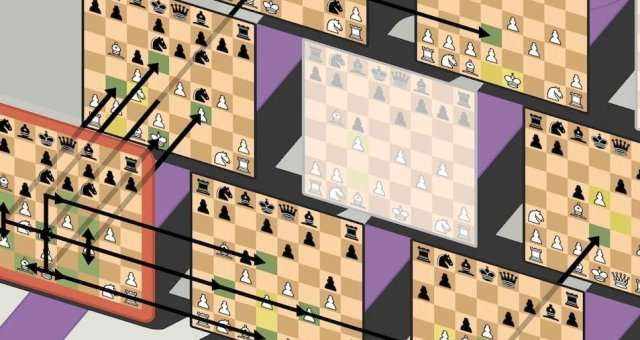
Game rules intimidating? Listen to me as I try to explain what each piece does and how they move in this bizarre game.
The UI
The Present
The UI in this game is simple, yet still does not explain a lot to new players, or people miss it.
There’s this vertical line labeled “The Present.” Any game pieces currently located on this line must be used during your turn. However, it’s possible to move a piece to an earlier point in time. If you do this, the “Present” line will also shift backward to reflect this new timeline.
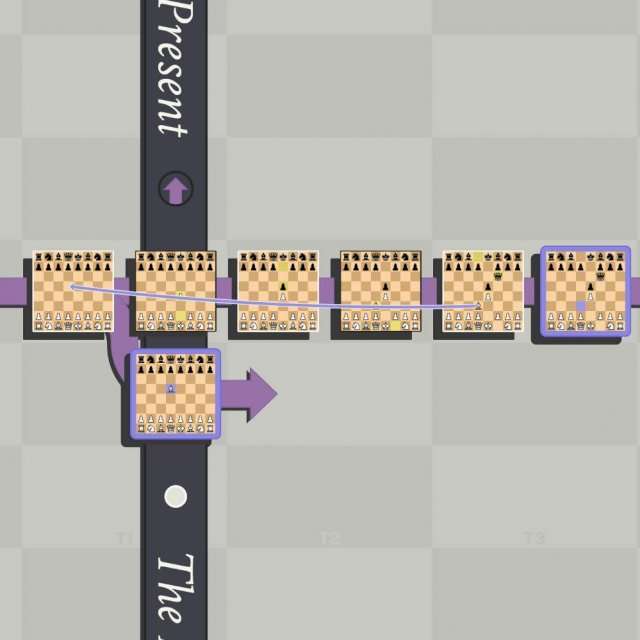
Another little UI that needs some labeling are those two arrows pointing up and down on the “Present.” These dictate where new timelines will show up, respect to their color.


I find that creating new timelines will only help the opponent in the long run, because of how pawns move in this game (explained in pawn section).
Board and time-traveling arrows
The edges of the game boards have colors that indicate whose turn it was when a piece was on that board. You are not allowed to move a piece onto a board that has your opponent’s color.
To help with moving pieces through different timelines, there are “History” and “Parallel View” buttons. These become clickable when you select a piece that has the ability to move through time. Clicking these buttons will hide your opponent’s colored boards, which should make it a bit clearer to see the possible moves.
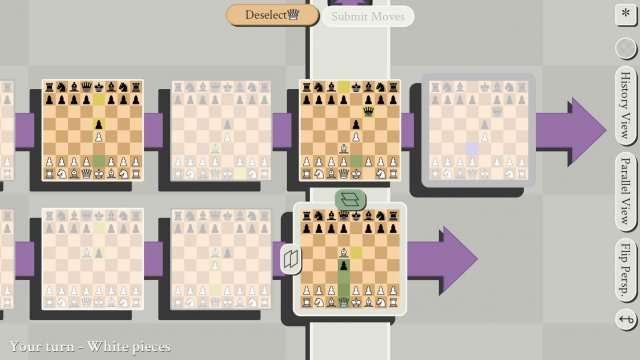
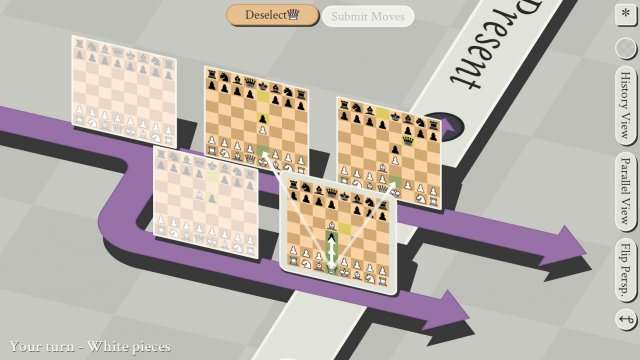
The Past
About the timeline arrows, when a piece moves anywhere in time, a blue arrow with the piece’s color is shown, and the “Present” moves into the new timeline. This one is self-explanatory.
But if a player moves a piece back in time twice before the opponent moves back (not counting moving from a board in present to another in present), the “Present” will not move back with that new timeline, and that new timeline will be marked with a white/black arrow underneath instead of the usual purple arrow. This will continue until the opponent moves the “Present” back, meaning that you will only create extra timelines that are in the past. The opponent does not need to play on those extra timelines, or the player, if it was the other way around. Once the opponent does create a new timeline anywhere in the past, only then, will the “Present” shift to the earliest timeline. This will also change the “extras” timeline arrow underneath from white/black to purple.
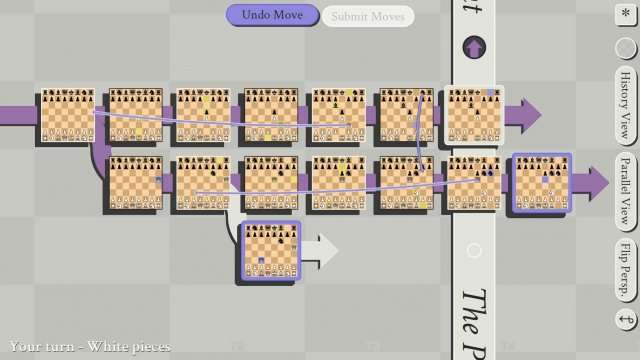
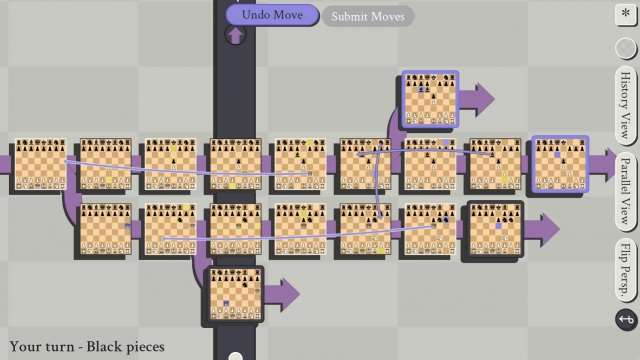
In other words, use your time-travelling powers carefully to avoid a pinch!

This one enables/disables the animation for time-traveling.

This one cycles through boards that you are able to play, hotkey is TAB.
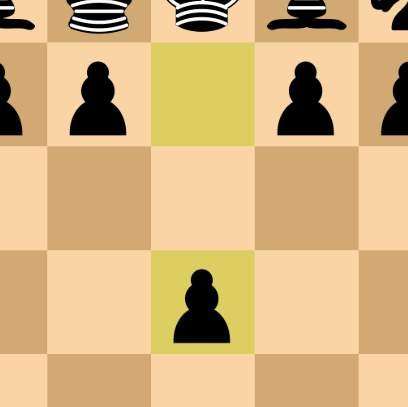
Yellow squares are pieces that have moved in their own boards recently.


Blue squares are points of time-travel departure and entry. They will replace any yellow squares at both boards.
Pawn
Classic chess pawn movement and capturing
Note that the pawn becomes only the queen after promoting, and nothing else.
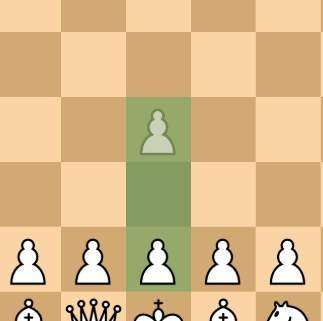


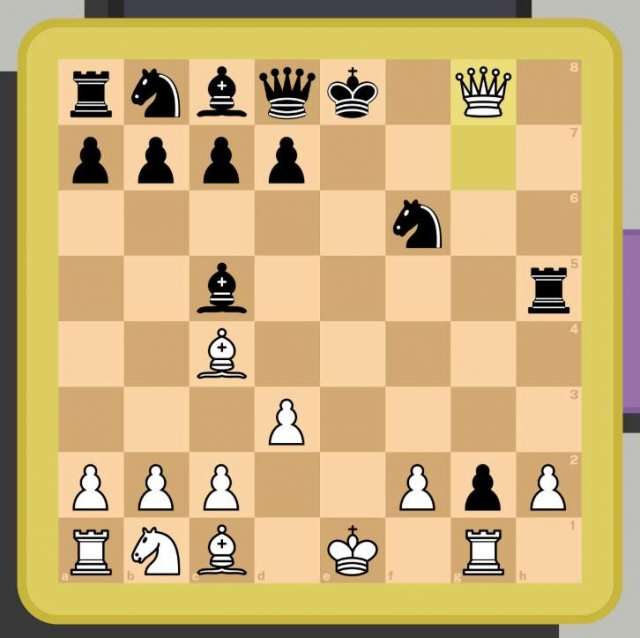
5D pawn movement
First, we must understand that the pawn moving through timelines will only end up in the same spot on the chess board. In other words, it won’t be able to move into another timeline if there is a piece already in the destination. This will apply to all other pieces as well.
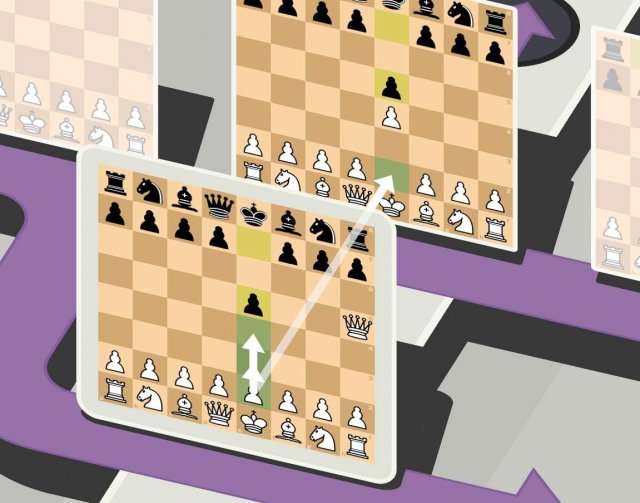
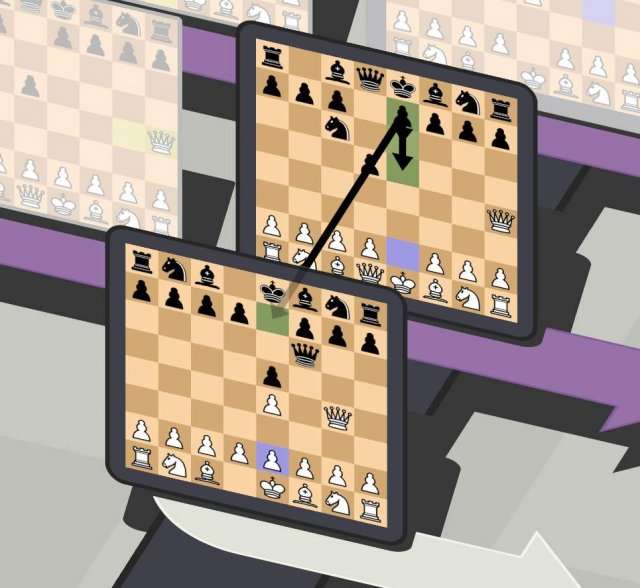
Pawns can only move through timelines relative to the piece color! Meaning that if the white side is on the bottom of the board, white pieces can only move up through timelines, and black pieces can only move DOWN through timelines!
Also, pawns that haven’t moved from the start are able to move through 2 dimensions up(white)/down(black).
5D pawn capturing
Similar to how pawns capture in classic chess, 5D pawns can only capture diagonally through timelines. Following the movement as stated before, pawns can only move through time and end up on the same spot on the chess board, and therefore, it can only CAPTURE pieces on said same spots.

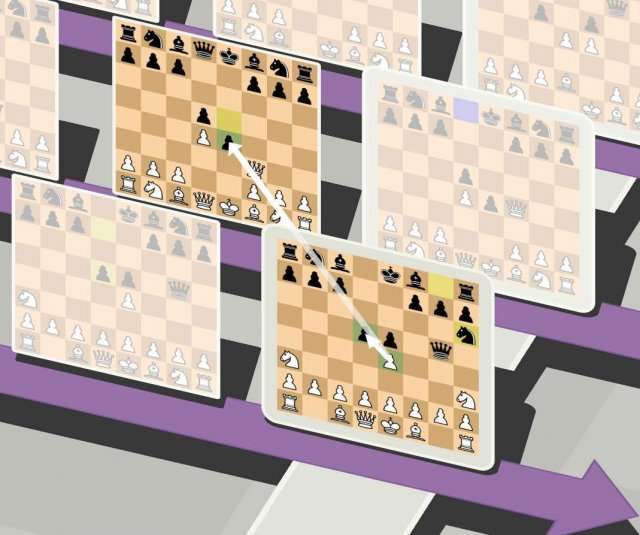
Knight
Classic chess knight movement and capturing
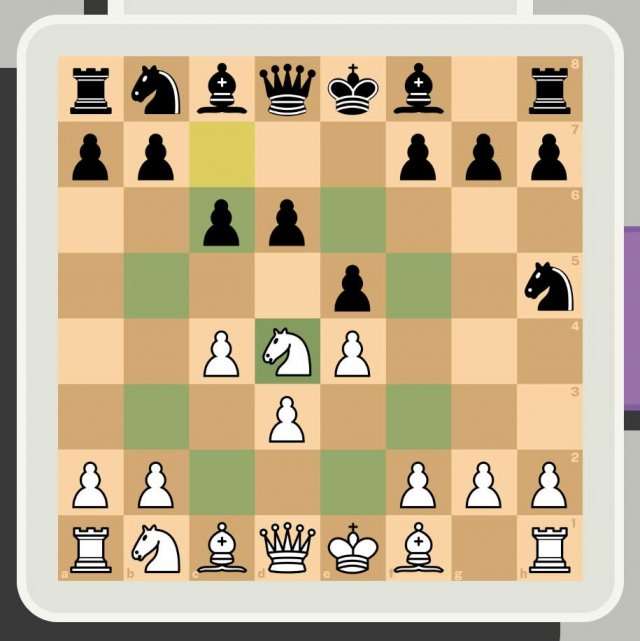
2 away 1 off, 1 away 2 off, the L. Able to jump over pieces.
5D knight movement and capturing
Similarly to classic chess movement, the knight’s movement through timelines has a similar L shape. And similarly to its ability to jump over pieces in its path, the 5D knight does not need to worry about obstacles, unless their own color is blocking a destination.
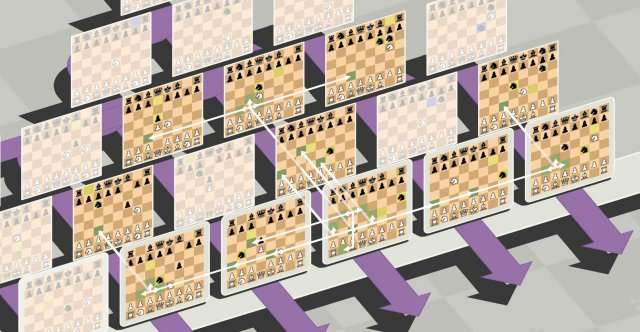
However, it has an extra step to perform along the way.
- When the knight moves 1 dimension, the place it will end up will be 2 spaces away from the original spot of the board it came from.
- When the knight moves 2 dimensions, it will end up 1 space away from the original.
- When the knight moves 3 dimensions (seen above), it will “complete” the L movement, and will end up in the same spot as the original.
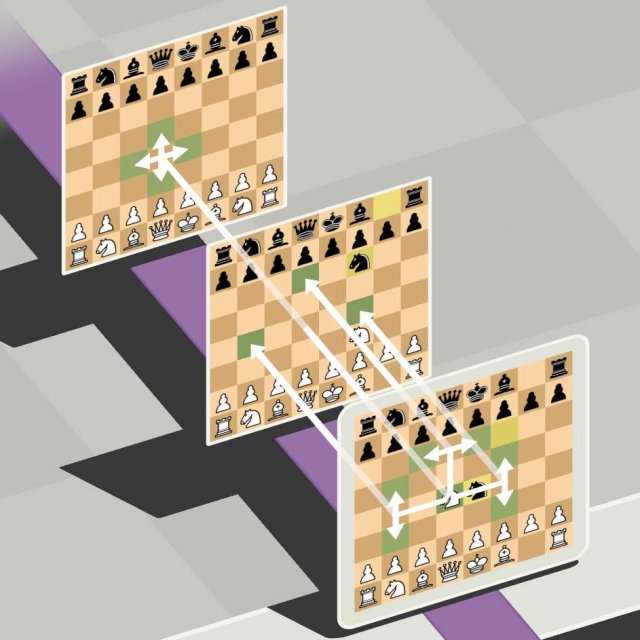
Bishop
Classic chess bishop movement and capturing
Infinite Diagonal Works.
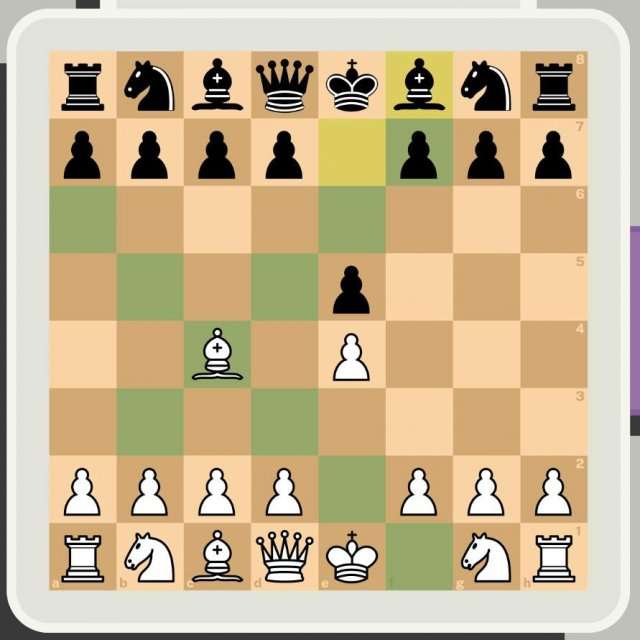
5D bishop movement and capturing
Diagonal diagonal diagonal, for better or for worse.
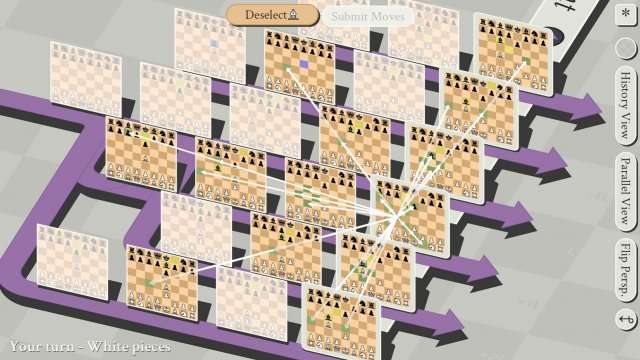
- Moving a bishop “diagonal” across timelines will put it in the same spot as the board it came from (seen above).
- Moving it back in time, or across boards parallel to the original board, will “rotate” its path, similarly to a rook. Basically, refer to the 5D bishop as a Lesser Queen.
- As long as there is nothing in its path in the timelines, it can reach infinitely.

Rook
Classic chess rook movement and capturing
Infinite 2 directions, strong.
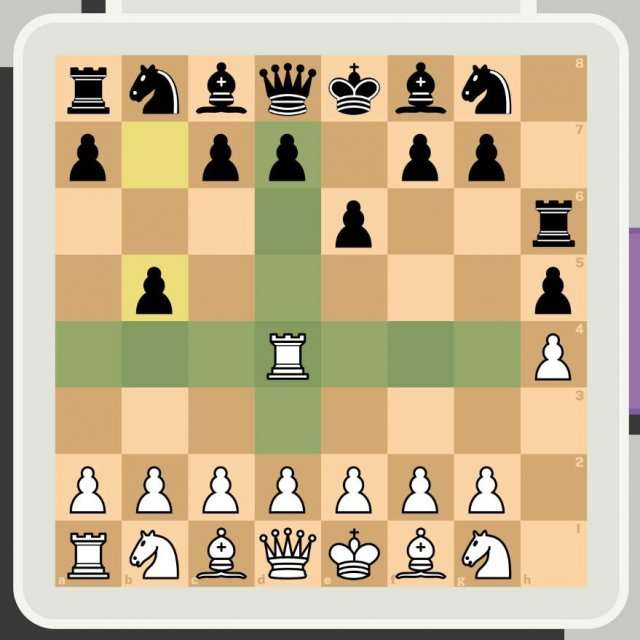
5D rook movement and capturing
The rook is the most simple piece in the game, hence it being first in the puzzles. Now, I can hear some of you going Ha?, but once you realize that you haven’t been thinking 5D, you will agree.
So, the only thing the rook can do when moving through timelines, is stay in the exact same spot on the board. However, since it can only move straight, the only movement it can do in timelines is going back to the past, and going to adjacent boards. It can go as far back or wide as it wants as long as there’s nothing blocking its path in the timelines.
Moving back in time
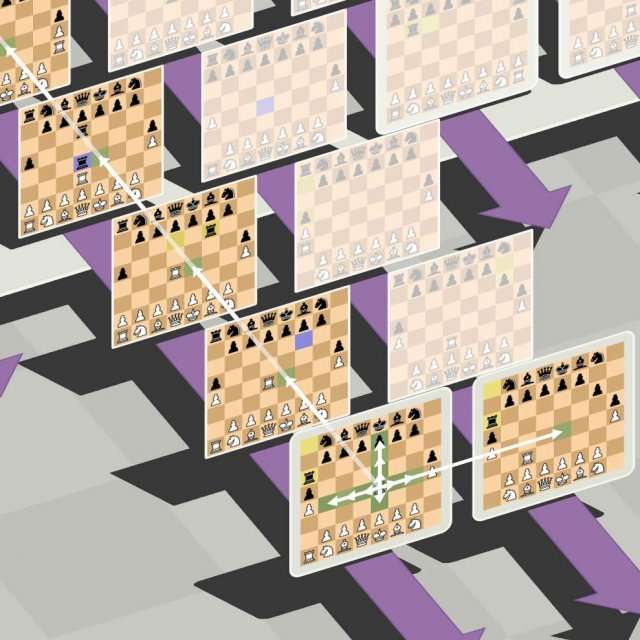
Moving across timelines

Queen
Classic chess queen movement and capturing
Straight, diagonal, all powerful Queen.
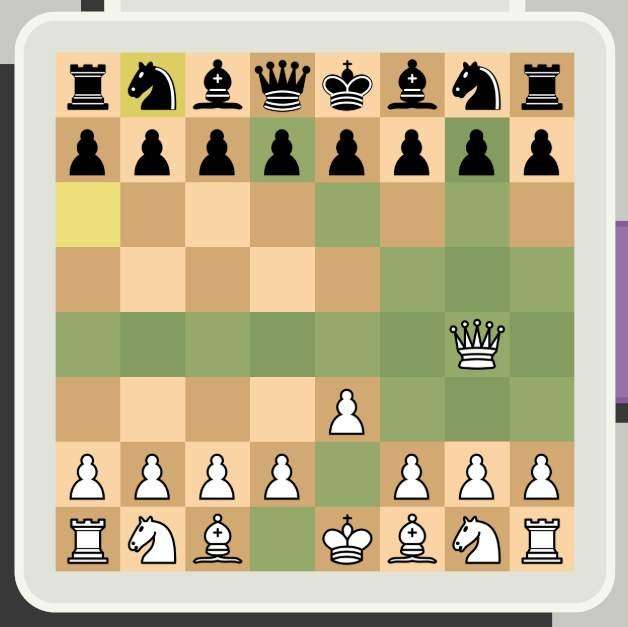
5D queen movement and capturing
The embodiment of “You will never reach the truth,” the Queen has acquired a time machine. She is still the most dangerous and valued piece.
Her movement through timelines are similarly powerful to her classic chess movement, however, she is capable of reaching all corners of any timelines she touches… like a rook and bishop combined, except its everywhere.

- To start, let’s look at how she moves into the past, since all other directions have the same movements as each other.
- First, she is able to move through time, and stay in the same position on the board, like a rook.
- Next, she has paths that are similar to the bishop’s “rotated” path, but instead of 4 paths, she has 8 paths, all branching out as the timelines get farther away.
- Think of it like: for every “dimension” she wants to get farther away from the original board = 1 space farther out from the original position of the Queen.
- She can go as far as possible using any of those paths, as long as there isn’t a piece blocking her path in a timeline.
Now take these 9 paths she can take to get to the past, and use it for the other 6 directions she can travel through time (past diagonally up, past diagonally down, alternate present up, alternate present down, diagonal future up, diagonal future down). That is the Queen. And this is her requiem.
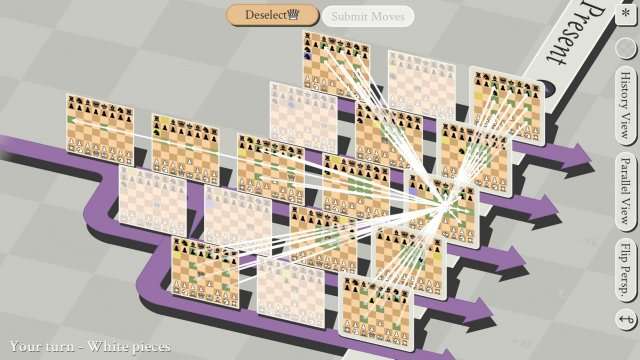
King
Classic chess king movement
The most important piece of the game, the king. You must protect it. He can only move 1 space in any direction in a turn.

5D king movement
Now you need to protect the king from timeline assassins.
The king moves similarly to the queen except he can move through ONLY timelines adjacent to his board. His location can stay the same or can be moved 1 space away from the original location of the board he came from. He will not be able to go to spaces in other timelines that have his own pieces on it, or spaces that are being threatened by the opponent.
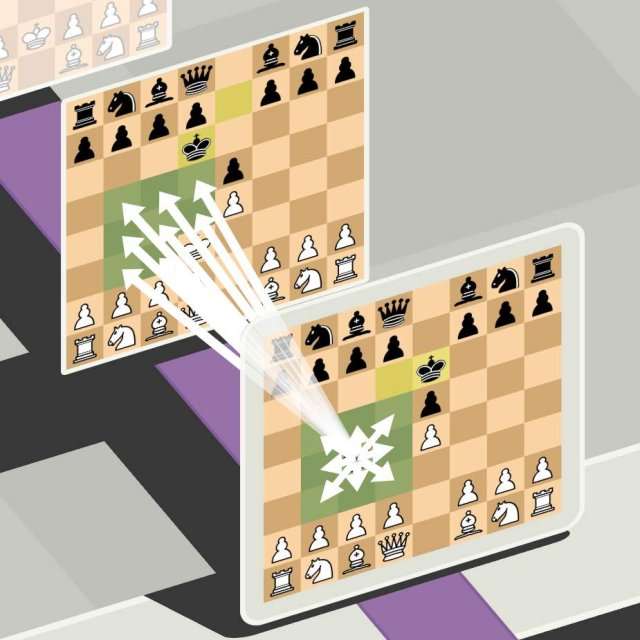


5D king capturing
The king can capture the opponent’s pieces in other timelines unless there is a piece protecting it, or if there is a piece protecting it from another timeline.


About checkmate
As the rules says, I find it much easier to try to checkmate a King in the past. What that means, to try to explain:
- Once you move a piece, a “board” is left behind, showing the “past.”
- In this “past,” you can’t move any of your pieces, because it’s in the past, you follow?
- So if a piece in the present (or in any playable board) were to somehow cross one of their spaces with a King in the “past,” it would automatically be a checkmate.

Rook Tactics I ~ Mate-in-one
Unicorn… Kusaww
It’s a unicorn

It can’t move in the present. Instead, it moves through time.
- According to the rules, it moves any distance along a triagonal. But to explain:
- Moving it diagonally through timelines would make its path like the Bishop’s straight movement through timelines.
- Moving it straight through timelines would make its path like its diagonal movement, except the path is “rotated” again, a branching square.
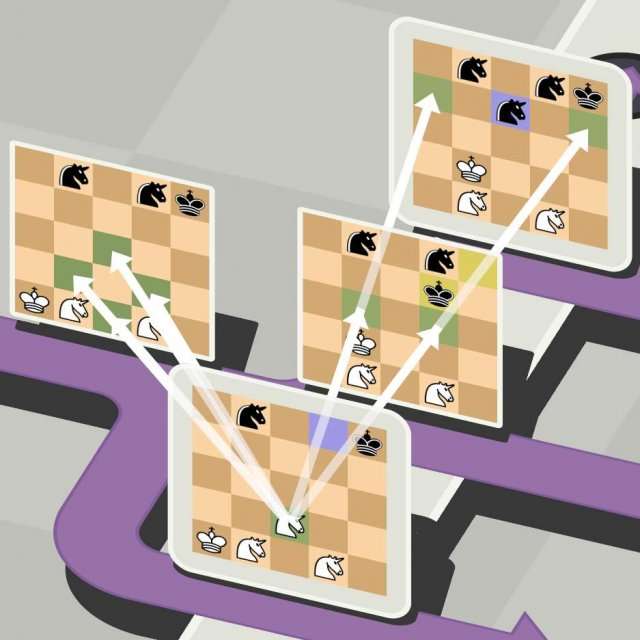
Dragon!
It’s… a dragon!

Similar to a Unicorn, it can’t move in the present.
If you understood how the Unicorn’s straight movement through timelines works, the Dragon uses the same movement, but the direction is diagonal through timelines instead.

So a dragon is weaker than a unicorn? Has someone been playing Monster Hunter for too long?



Be the first to comment